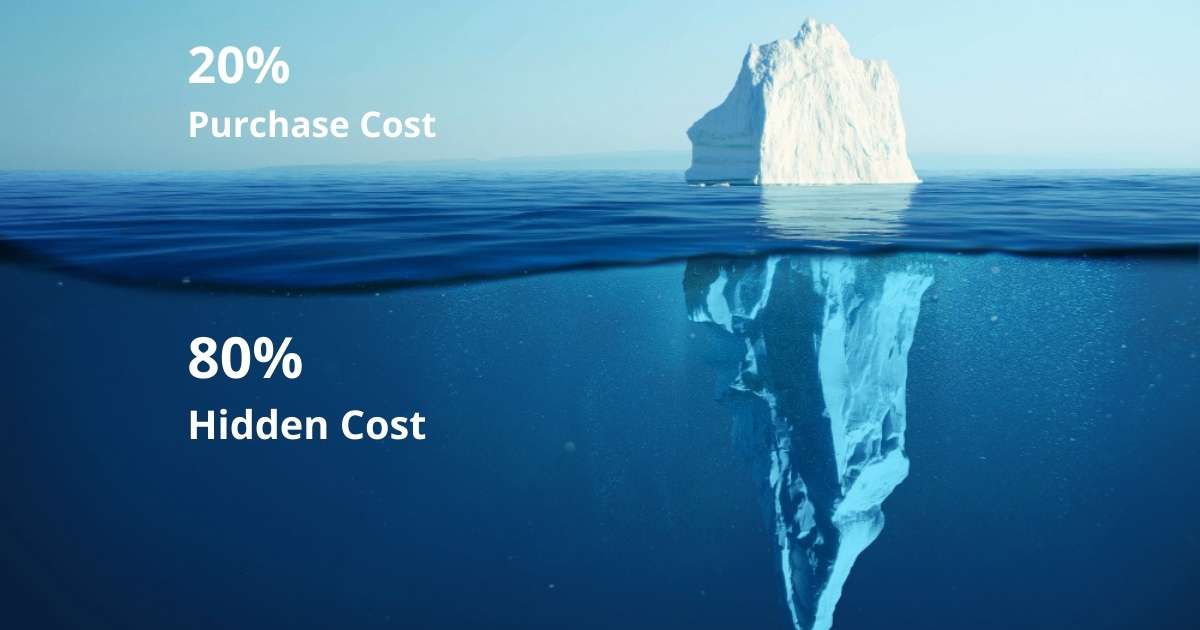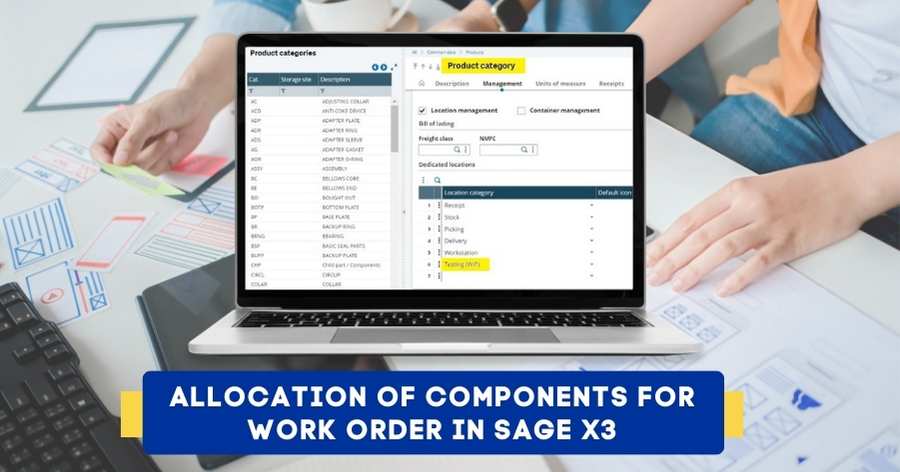A business must have accurate and effective demand forecasting to gain a competitive edge in the market landscape. It would be a game changer for the companies to meet customer demands and many more benefits. The significant benefits of these forecasts are that it helps in resource allocation, measure the strength of the business, explore new opportunities, and gain market share.
Defining Demand Forecasting
Demand forecasting is the process of predicting the demand for goods and services for future use. Forecasting works based on previously collected data by answering when, where and how many questions.
Forecasts have vast importance for the company and they can be obtained using demand planning processes or mathematical models based on historical data. In addition, qualitative methods are also used depending on the expert opinion or managerial experience. Here are some of the benefits of implementing this for the business —
- Production planning and scheduling, obtaining accurate inputs.
- Helps in budget planning.
- Determining pricing strategy.
- Advertisement planning and implementation.
Demand forecasting is valuable in a place of large-scale production. A significant point to note here is that predictions are just informed guesses helpful in making crucial business decisions. It mainly helps in avoiding the over-production or under-production of goods.
Example of demand forecasting
Demand forecasting is a crucial process for businesses to anticipate customer demand accurately. For instance, a retail company may use historical sales data, market trends, and customer insights to forecast the demand for a particular product. This helps them determine the optimal inventory levels, production schedules, and marketing strategies to meet customer expectations and maximize profitability. Effective demand forecasting enables businesses to make informed decisions and optimize their operations accordingly.
A grocery store uses demand forecasting to predict the number of tomatoes needed for the upcoming week based on historical sales data, seasonal trends, and upcoming events. This helps them optimize their inventory, minimize wastage, and ensure they have enough tomatoes to meet customer demand.
Types of demand forecasting
Demand forecasting is crucial in predicting demand for the product. There are six types of demand forecasting which help in achieving an accurate picture of future sales. All the types are listed and elaborated below :
Passive demand forecasting
In this type, historical sales data is used to predict the future of sales. It doesn’t make use of statistical methods or analysis of economic trends. It is quite simpler and beneficial for businesses with vast historical data. And passive demand forecasting can be efficiently applied to companies that aim for steady growth rather than instant sales growth. The assumption in the passive model is that the sales data for this year will resemble that of the previous year.
Active demand forecasting
This type of demand forecasting is used by start-up businesses that are experiencing rapid growth. The active approach considers both ambitious growth strategies, such as marketing or product development initiatives, as well as the overall competitive landscape of the industry, encompassing factors like economic forecasts, market expansion forecasts, and other relevant considerations.
Long-term demand forecasting
This demand forecasting is done for a period of more than one year. It is similar to a blueprint that helps to plan for seasonalities, annual patterns and production capacity. This planning directs the business to focus on the growth trajectory, generate a fulfilment marketing proposition, plan capital investments and expansion strategies and many other future demands.
Short-term demand forecasting
Short-term demand forecasting focuses on small forecast planning such as planning inventory for an upcoming festival sale. Also, this type is an advantage for managing a just-in-time(JIT) supply chain or a product line that changes frequently. Nevertheless, businesses use this together with long-term demand forecasting.
Internal demand forecasting
Business growth has a limiting factor i.e. internal capacity. For example, if there is a prediction that the customer demand will exceed in the next three years, an analysis has to be made if the company has the capacity to meet the demand. Internal forecasting also helps to meet the requirements of the operations that will impact future sales. Take, for example, human resources, with the available forecasts it will be easier to determine the number of employees that have to be hired for the next three years.
Macro and Micro demand forecasting
In a broader lens, macro demand forecasting involves analyzing external factors that can impact business operations, including economic circumstances, competitive dynamics, and shifting consumer preferences. Comprehending these factors helps to find out new expansion opportunities for a product or service, predict forthcoming financial challenges or any shortage of raw materials, and others.
Suppose your company is only interested in stability than growth, still, you can have a look at the company’s external factors to avoid any issues arising in the supply chain.
Demand forecasting at the micro level is also external. But it pertains to a particular customer segment or a specific industry.
Also Read : What is Batch Production in Manufacturing?
Demand forecasting methods
First, it is vital to select the type of forecasting. Further, proceed to make a decision regarding the creation of a forecast. Predictive analysis, the Delphi method of forecasting, conjoint analysis and client intent surveys are some of the significant demand forecasts. Let’s learn more about the different demand forecasting methods.
1. Sales force composite
The sales force composite method involves the forecasting of customer demand on the basis of gathered feedback. This source is an excellent resource to get insights into customer preferences, product trends and competitor status.
2. Statistical method
This method is cost-effective and the most reliable method of demand forecasting. In the following ways, this method can be included.
Trend projection
It is the simplest method of demand forecasting. Business strategists have to analyse past records to predict the future trend of a product or service. Anamolies have to be checked and removed. A better example of anomalies is a brief spike in the demand for a product and sales for a month due to your product becoming viral. These type of events are to be avoided as it is unlikely to be repeated.
Regression analysis
Companies can identify and examine the multiple variables such as leads, conversions and email sign-ups and understand the relationship between them. So analysing all these segments will give a holistic view which will enable the company to invest in the right area to boost sales.
3. Market research
Market research is a crucial type of demand forecasting method and in it, the customer survey is an important demand forecasting tool. Currently, online demographic surveys will help in targeting the right audience. Availing the assistance of survey software is more effortless and less time-consuming.
Surveys can give a lot of valuable insights helping the forecasters to paint a better picture to understand customer requirements. Sales figures alone cannot help the business with demand forecasting.
Enumerated below are some of the popular sales and marketing surveys.
Sample surveys – Here the potential buyers are interviewed to comprehend their buying habits.
Complete enumeration surveys – Too many sample potential buyers are interviewed to obtain large data.
End-use surveys – In this, the companies are surveyed to understand the end-use demand.
4. Econometric
This method takes into consideration all the economic factors. So the best recent example is the pandemic covid 19 where the demand for e-commerce sales increased worldwide. Implementing econometric demand forecasting methodology can prove to be highly complex due to the limited feasibility of conducting controlled experiments, wherein a single variable is altered and the resulting response of the subject is measured. This method is focused on using a complex set of relevant equations where all the variables are prone to change simultaneously.
The forecasters who employ this technique are known as econometricians.
5. Delphi method
This method is frequently used together with an expert opinion. It is one of the popular methods which was first developed by the RAND Corporation in the 1950s. In the Delphi method of demand forecasting, the industry’s expert opinion is taken into consideration to create a demand forecast.
- A group of industry experts are assembled.
- A set of questionnaires is prepared and sent to each member of the expert panel.
- The facilitator compiles the questionnaire results and shares the summary with each panel member.
- Again the group of experts are requestioned regarding the forecasts. Further, the Panel members are prompted to reconsider their initial responses based on the feedback received from other members of the panel.
- This round is repeated and extended for maybe one or two rounds.
With the Delphi method of demand forecasting, more informed responses can be acquired as this technique allows experts to build on each other’s knowledge.
6. A/B experimentation
Market experiments conducted under controlled conditions can provide valuable insights into customer behaviour. These experiments, such as A/B testing of various promotions, features, website imagery or features, and email subject lines, among others, allow companies to gauge consumer preferences and enhance their demand forecasting capabilities. An interesting finding from such experiments is that companies tend to achieve higher sales when pricing their products with odd numbers at the end.
Also Read : How ERP Helps Improve Business Productivity and Growth
Benefits of demand forecasting
Demand forecasting has multiple benefits to provide for a company with higher goals.
1. Budget preparation
Budget preparation is the most crucial aspect of the company. Without demand forecasting, it will be difficult to set estimates. Suppose your business overspends on inventory due to poor purchasing practices, it happens due to improper demand forecasts. And the remaining amount won’t be sufficient enough to spend on other functions. So systematic demand forecasts are essential to create a budget plan.
2. Development of a pricing strategy
To ace the pricing strategy, a clear-cut understanding of the demand for a product or service is essential. In addition, it is pivotal to know about the competition in the market. For example, if you have a fully stocked large inventory and further you come to know about a newer model that emerged in the market. You will immediately slash prices and plan to reduce the inventory to half. Another example for this is, suppose there is high demand for a limited quantity product, the scarcity principle can be applied to raise the price as an exclusive offer.
3. Minimising backorders
Inventory requires proper demand forecasting to reduce its shortcomings. Suppose the product sales surged unexpectedly for a low-demand product due to influencer marketing. This results in backorders. And if you are not able to fulfil customer orders, then they may move to your competitor. If there is proper demand forecasting, situations like this can be avoided.
4. Inventory storage
Inventory storage can cost the business, so it is important to optimise inventory frequently. Storing a low-demand product for a long time will impact the inventory carrying costs. So, here, demand forecasting is vital and the necessary products can be stored at the right levels.
5. Save restocking costs
Restocking is crucial for the business as it costs the customer and impacts the business’ profits too. In this rush hour, you will even pay the demanded shipping charges to your supplier which will affect your profit. With proper demand forecasting method, the products can be restocked based on priority.
Simple steps to perform demand forecasting
These four simple steps of demand forecasting will help you to begin properly.
1. Enumerate your objectives
It is crucial to define and explain your goals first and ask the following questions.
- Can customer demand shifts impact sales forecasts?
- Immediate steps to take when there is a demand drop.
2. Gather data
The next step is to select the demand forecasting method and collect a large amount of relevant data. It helps in more accurate forecasting. The data has to be acquired internally and externally for a more accurate demand forecast.
3. Conduct regular analysis
Take for example, after collecting ample data, it is important to check for sales trends to make precise predictions. The trends have to be frequently analysed to get more accurate details.
4. Implement necessary modifications
Suppose the market demand indicates that there will be high demand for a particular product in the next season. The business should make the necessary adjustments in the inventory to meet the demand. Findings play a vital role in your business as they serve as the foundation for making adjustments to your operational strategies, ensuring better alignment with your forecasts.
Tips to start demand forecasting
Demand forecasting help business in many ways. Here let us learn a few tips to make use of demand forecasts effectively–
- Data analysis has to be done more frequently.
- For accurate data, consult industry experts.
- Maintain a record of your findings and data.
- Leverage demand planning tools such as a sales forecasting calculator.
- Select and settle on a specific forecasting method.
- Utilize cloud-based software to store and manage data.
Conclusion
Demand forecasting is crucial for successfully running your business. If the customer demand is accurately predicted, it will be easier for the business to optimise inventory, production planning, and marketing strategies. Several methods can be used for demand forecasting, such as statistical models, market research, and trend analysis. ERP system will help in collecting accurate demand forecasting data for the business to take insightful decisions.
Historical sales data, customer behaviour patterns, market trends, and external factors are analyzed to generate forecasts. These forecasts provide insights into future demand, allowing you to make informed decisions regarding resource allocation, pricing, and promotions. Effective demand forecasting enables you to meet customer expectations, minimize inventory costs, avoid stockouts, and maximize profitability. It serves as a valuable tool for strategic planning and maintaining a competitive edge in the market.







